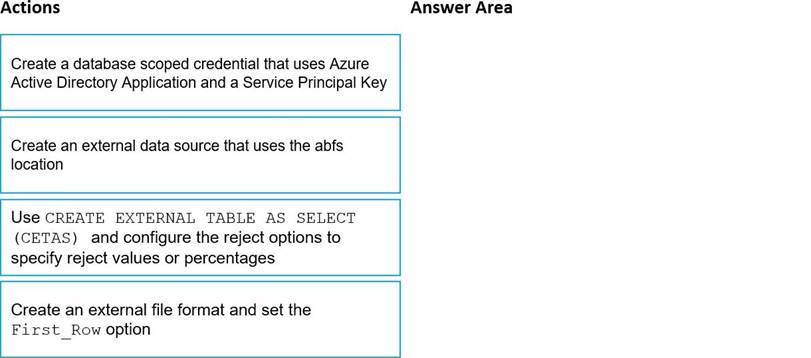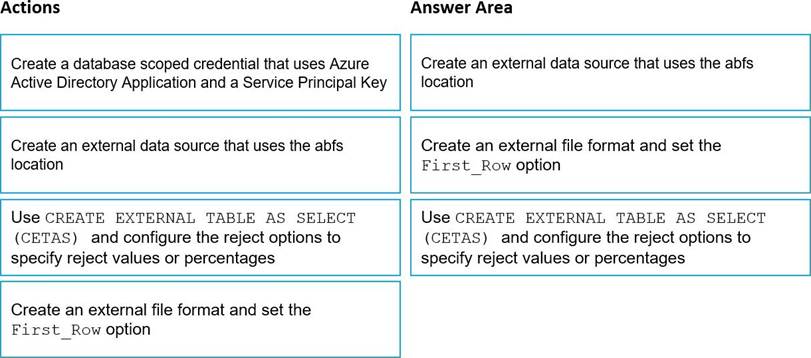- All Exams Instant Download
Which three actions should you perform in sequence?
DRAG DROP
You have data stored in thousands of CSV files in Azure Data Lake Storage Gen2. Each file has a header row followed by a properly formatted carriage return (/r) and line feed (/n).
You are implementing a pattern that batch loads the files daily into an enterprise data warehouse in Azure Synapse Analytics by using PolyBase.
You need to skip the header row when you import the files into the data warehouse. Before building the loading pattern, you need to prepare the required database objects in Azure Synapse Analytics.
Which three actions should you perform in sequence? To answer, move the appropriate actions from the list of actions to the answer area and arrange them in the correct order. NOTE: Each correct selection is worth one point

Answer: 
Explanation:
A picture containing timeline
Description automatically generated
Step 1: Create an external data source that uses the abfs location
Create External Data Source to reference Azure Data Lake Store Gen 1 or 2
Step 2: Create an external file format and set the First_Row option.
Create External File Format.
Step 3: Use CREATE EXTERNAL TABLE AS SELECT (CETAS) and configure the reject options to specify reject values or percentages
To use PolyBase, you must create external tables to reference your external data.
Use reject options.
Note: REJECT options don’t apply at the time this CREATE EXTERNAL TABLE AS SELECT statement is run. Instead, they’re specified here so that the database can use them at a later time when it imports data from the external table. Later, when the CREATE TABLE AS SELECT statement selects data from the external table, the database will use the reject options to determine the number or percentage of rows that can fail to import before it stops the import.
Latest DP-203 Dumps Valid Version with 116 Q&As
Latest And Valid Q&A | Instant Download | Once Fail, Full Refund
Subscribe
Login
0 Comments
Inline Feedbacks
View all comments

